Sai Baba Aarti's
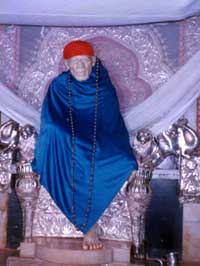
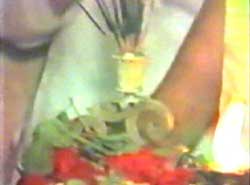
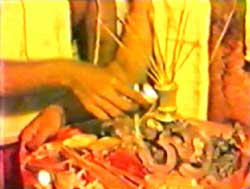
Aarti is a form of congregational worship, in which the devotees stand facing the image of a deity or a defied saint or, the personage (‘living idol’) of an exalted saint singing devotional songs in unison. The devotional songs are accompanied by musical instruments such as bells, gongs and crymbals. The idol of god is decorated with beautiful garlands and aromatic incence and musk are kept smouldering. While the devotees sing psalms, either an official or a devotee revolves (usually) a fivefold oil lamp – consisting of five oil – traylets - around the idol in clockwise direction. Such a performance of aarti with a fivefold oil-lamp is called panchaarati.
A lamp with wicks burning clarified butter (ghee) is most preferred. After the devotional singing, the flame of the aarti-lamp is offered to the devotees, who pass their hands over the sacred flame by turns and quickly draw them to their faces and heads as a gesture of drawing onto themselves the auspicious energy emanating from ‘the receptable grace’ i.e the flame.
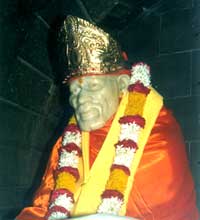
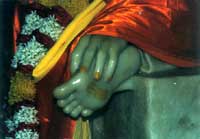
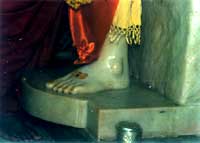
The essential constituent, of the ritual of aarti is a kind of simple fire ritual. That is why it is frequently translated as a ritual as of ‘waving lamps’.
- Shri Lord Satguru Saibaba handed over an "Arti Saibaba...." to one of the devotee when he facing sum problem.
- Shri Saibaba left his body on 18th October, 1918 next day morning he appeared in Mr. Laxminarayan dream (0ne of the devotees) and told him that "Mr Babusaheb Jog" fill that I have died hence he will not come for my "kakad Arti".
As for as my knowledge Shri Lord Satguru Saibaba is given more important above Arti, hence I request you pleased tried to understand meaning up Arti.
It was the masters of the school of Bhakti (devotion) who transformed the simple-fire ritual into an exalted spiritual method. Worship in a congregational setting is helpful in more than one way.
In a communal prayer devotees can pray in a space charged with the homogeneous devotional fervour of a group can cut across the insulation of the ego and merge easily into a group rhythm.
It induces a sense of expanded consciousness in which one tends to lose the individual ‘voice’ subtly, an awareness of being a part of a ‘Whole’. Sense of separate identity melts into the mainstream of collective consciousness.
A hymn or a psalm is an expression of ardent devotion which in turn is capable of evoking kindred emotions in the hearts of those who recite it This is a language to commune with the Divine.
By waving the lights in circular motion, we, in fact, symbolically perform ‘Pradakshina’ around our Deity.
When the five-wick lamp is lit, the devotee waves it symbolically, offering his five pranas (The entire being of five pranas, which are praan, apaan, samaan, udaan and vyan. Praan has it’s seat in the lungs and is breath, Apaan goes downwards and out at the anus. Samaan has its seat in the cavity of the navel and is essential to digestion. Udaan rises up in the throat and enters the head. Vyan is diffused through the whole body), to the Lord, totally surrendering himself and gaining, seeking the union of the devotee’s soul with the Supreme Self.
Click here to listen to Baba's Aarti